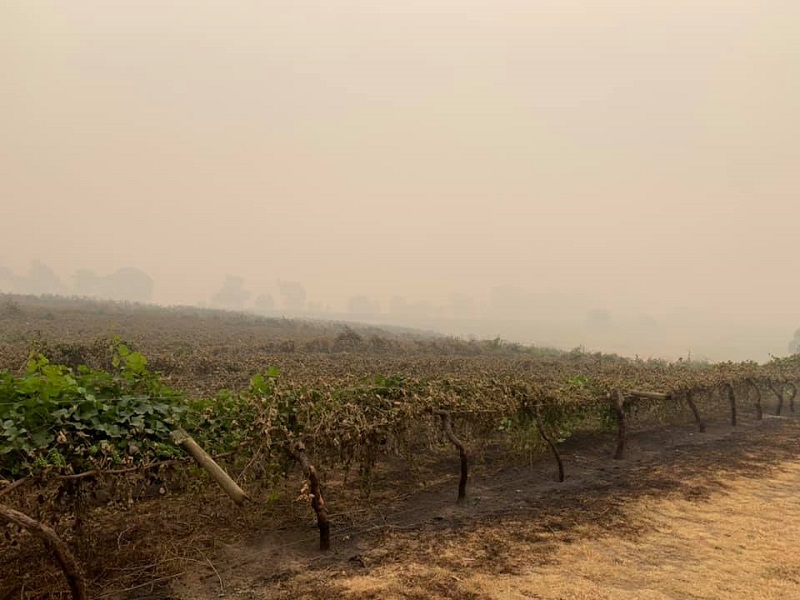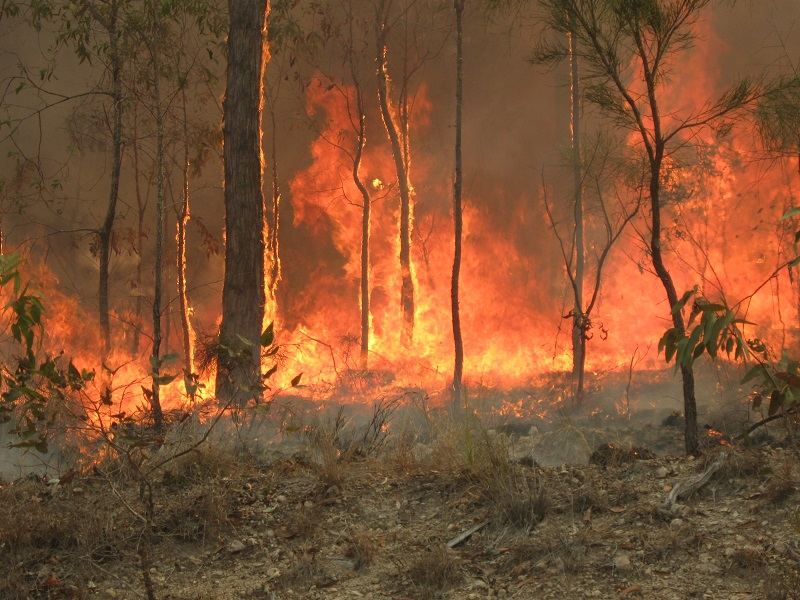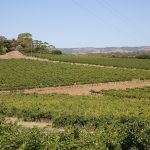Australia’s wine sector is drawing together to provide support and advice to those affected by fire.
Wine Australia, Australian Grape & Wine (AGW), the Australian Wine Research Institute (AWRI) and viticultural experts, backed by the Federal Government, and state and regional wine agencies, are coordinating a response that will offer support and advice in the short-term and a longer-term action plan.
Wine Australia chief executive officer Andreas Clark said it would be several weeks before it would be possible to get a real picture of bushfire impacts in the affected areas.
“In some areas where people have been evacuated it will be some time before it is safe to access vineyards. There is also the fact that assessment of the impact on vines is complex,” Clark said.
“It is easy to see when vines are burned but often it takes much longer to establish the damage caused by heat.”
Clark said in some regions of South Australia, New South Wales, Victoria and Queensland individual vineyards and wineries had suffered devastating damage which would take years to recover and local regions and the sector more broadly would step in to assist.
“Sadly, it is not the first nor the last time that Australia has dealt with bushfires. What we have seen in the past and no doubt will again in the future is an astonishing generosity where people have donated grapes and labour to assist their neighbours and friends to recover.”
Clark continued it was important to keep the impact of the fires in context.
“Australia is a very large country with wine regions spread across it from the eastern seaboard right across to the west,” he said.
“Most fires have been in heavily forested areas or national parks. While the toll on individuals cannot be underestimated and should not be downplayed, a review of fire maps suggests a maximum of around 1,500 hectares of vineyards fall within the fire affected regions to date.
“Even if all those vineyards were fire damaged – and they are not – it would only be about one per cent of Australia’s total vineyard area.”
AGW chief executive Tony Battaglene said there would be a coordinated response to both short-term relief and longer-term planning.
“Responses must include relief for those directly impacted, including those growers who might not be able to sell smoke-affected grapes,” he said.
“In the medium term we must look to strengthen regional tourism and bring people back to the regions.
“Our message is that Australia is hurting from the fires, but we are open for business. We need donations to the relief funds, support for our emergency services, and consumers to buy our wine and visit our regions. It is important to note that the fire season is not over and our temporary relief may not last.”
The fires have been devastating for some producers and some regions.
Adelaide Hills
The Adelaide Hills have suffered directly from bushfires. According to the Adelaide Hills Wine Region industry association, the fire has potentially wiped out a third of wine production in the area.
Around 25,000 hectares have burned in this fire, there’s around 3,300 hectares in the Adelaide Hills under vine, with 1,100 in the fire burnout zone, which makes up one-third of total vineyard production.
Grape production within the fire-affected area is worth $20m, which goes on to become 794,000 cases of wine.
Heat, radiant heat damage, has wiped out a lot of crops, but we expect vines to recover from that if growers can rebuild their irrigation. This is looking to be a major concern with a lack of availability of irrigation supplies. Where they’ve been burnt quickly, it’s a complete rip out and restart.
Smoke taint is difficult to estimate at the moment, but it was early enough in the season for it to be relatively minor if we can escape further fires.
Kangaroo Island
Most of the vineyards on Kangaroo Island are located in the eastern half of the island and not in areas identified as part of the ongoing fires. Some small vineyards around Parndana may be affected. Kangaroo Island has an estimated total of 136 ha of vineyards.
New South Wales
The fires on the east coast of Australia in NSW are primarily affecting forests and national parks, rather than wine regions.
The affected area north of Bateman’s Bay is in the Shoalhaven Coast wine region, which has a total of 41 hectares of vines, mostly in the northern half of the region. It is not known how many of these are affected.
The fires west of the Kosciusko national park are within the Tumbarumba wine region, which has a total of 176 hectares of vineyards. It is not known exactly the extent or location of fire damage within this area.
However, the majority of vineyards are a long way north of Corryong, where the fire damage appears to be most significant.
The fires west of Newcastle are partly located in the Hunter wine region, but are further south than the majority of vineyards in the region, which are concentrated around the Cessnock/Pokolbin/Rothbury area.
Hunter Valley
In regions such as the Hunter Valley, where veraison begins in early January, and which is surrounded by bushfires, the impact of smoke taint is likely to be severe.
Early testing suggests that grape quality will be severely affected. Production in the Hunter Valley is around 4,900 tonnes.
Canberra Region
Smoke taint is likely to be a serious problem for the Canberra region (around 500 tonnes) with smoke forecast to continue for the foreseeable future. This region, while not directly impacted by fire damage, is likely to be severely affected.
Tumbarumba
The fires have both directly impacted on the region and ongoing smoke taint is also likely to be a problem. This region produces around 500 tonnes.

In a statement posted on social media, family-owned Johansen Wines revealed their property had to be evacuated when fires approached the vineyard on New Year’s Eve.
Victoria
Much of south-eastern Victoria has been subject to fire or is likely to come under threat in the coming weeks and months.
Most of the fires are in the East Gippsland area, where there are no or very few vineyards. The fires south of Albury are within the King Valley, Alpine Valleys and Beechworth wine regions, which together have a total of approximately 1,900 hectares of vines.
However, the majority of vineyards are located to the west of the King River, but to date has not reportedly experienced any fire damage. Most of the damage appears to be along the border between the King Valley and Alpine Valleys GIs, where there are very few vineyards.
Gippsland has suffered severely and Rutherglen, King Valley, Beechworth and the Alpine regions are vulnerable in the next few weeks. This could bring up to 10,000 tonnes under threat.
According to one grower contacted by Daily Wine News in East Gippsland, no vineyards were lost in the region but the risk of smoke taint will remain into veraison. There are also concerns that local tourism that’s crucial to the area’s many small cellar doors could suffer.
Western Australia
In Western Australia, the Stirling Range national park fire is located in the Great Southern wine region, but there are no vineyards in or near the national park area of the region.
Queensland
Queensland production is around 900 tonnes. 2020 production is likely to be a fraction of this due to drought and water shortages.
Tasmania
Tasmania produces around 10,000 tonnes per annum. There is currently fire activity in Tasmania, but no reports of fire damage, and it is still too early to expect smoke taint damage.
One of the big impacts on the wine sector and regional communities is the potential impact of reduced regional tourism due to the fire impacts.
Many small family businesses rely largely on tourism and winery visitation. The flow-on impacts of the grape and wine sector to these regional communities is very important to the local economies.
Donations can be made to the Australian Red Cross or the Adelaide Hills in South Australia.
Donations can be made to Queensland’s Granite Belt Drought Assist via Facebook.
















